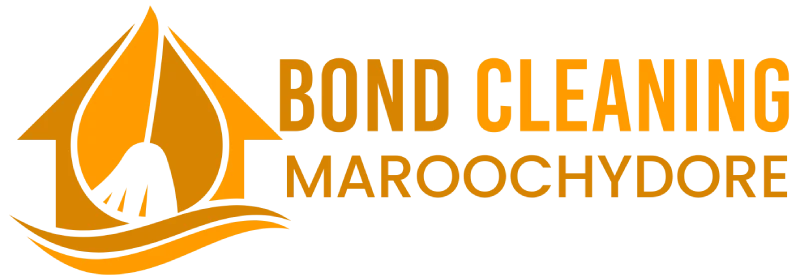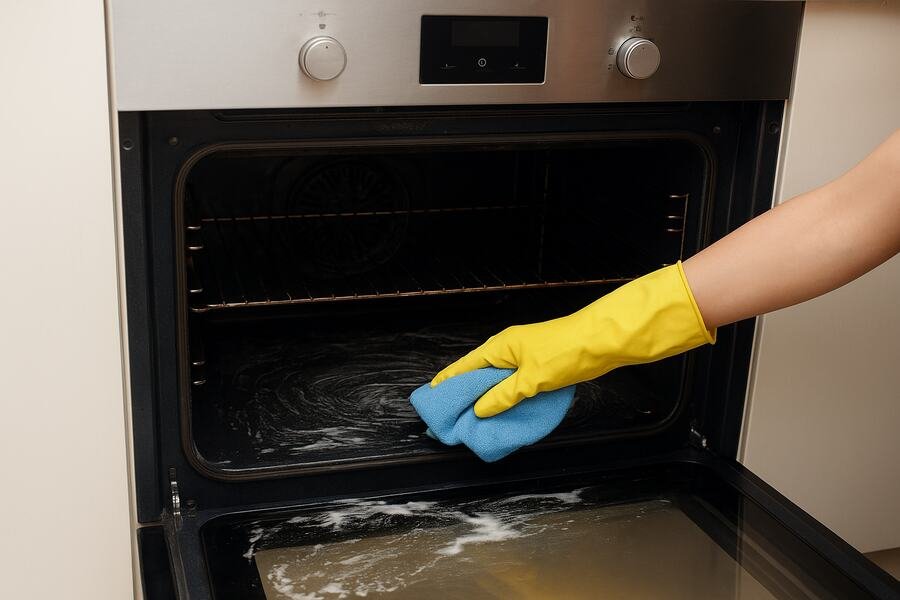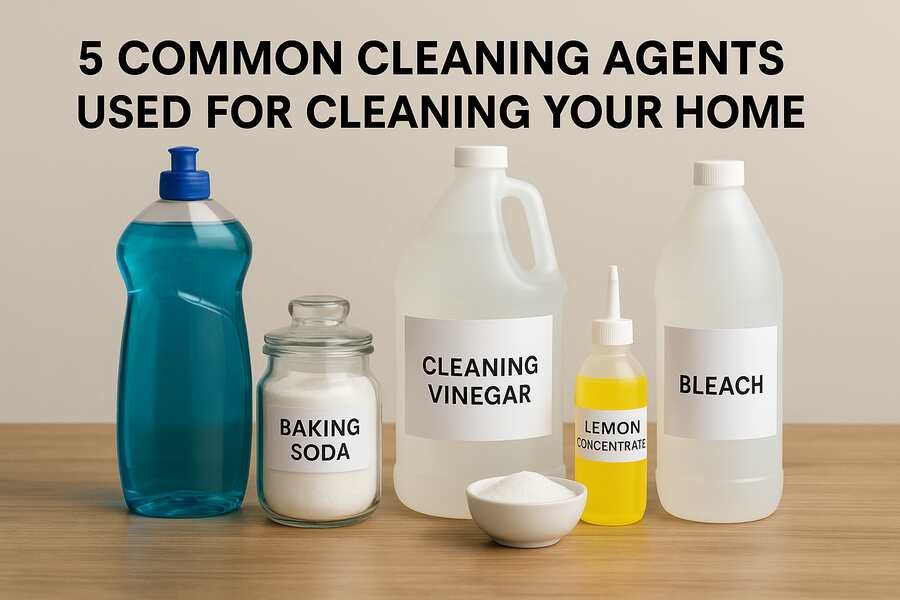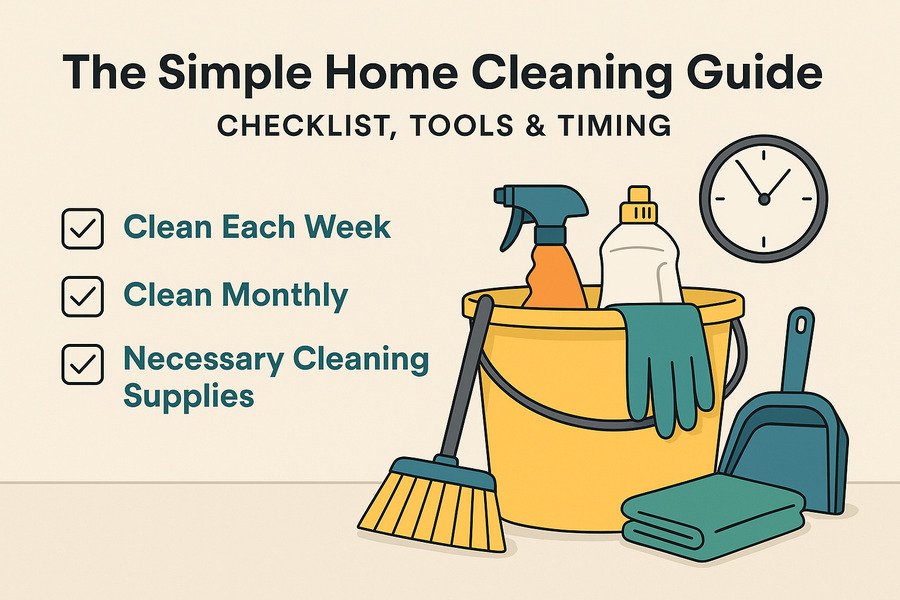Effective Ways to Remove Grease Stains from Various Surfaces
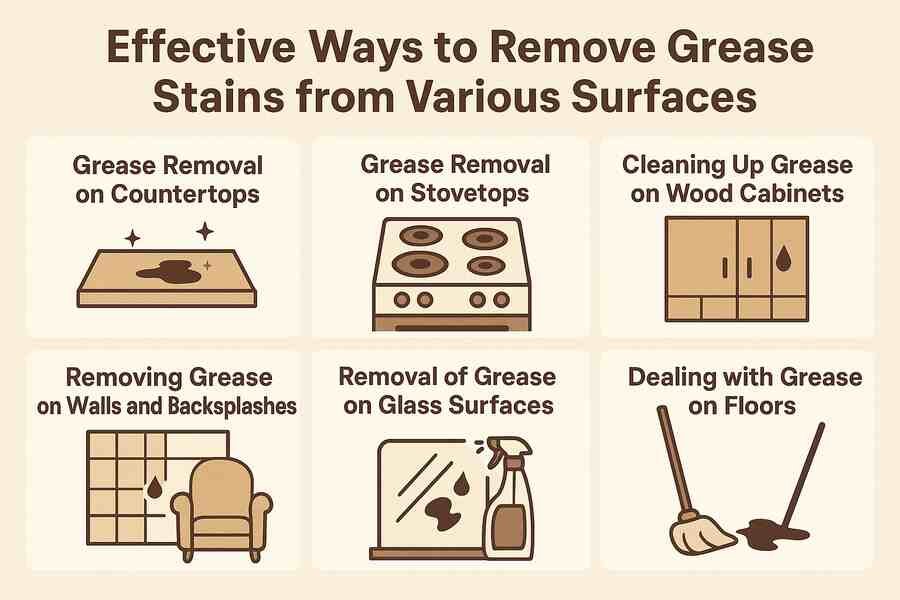
Smart Ways to Remove Grease Stains Easily
Have you ever had one of those stain moments where you wonder, How am I going to get this stain out? By no means. Having the gimmick of appearing in places that you do not expect and will not go away, grease stains can mess up your kitchen, your walls, and even your cabinets.
The challenge? Grease does not remain on the surface. It comes in, clings and pulls in the dust like a magnet. And the best thing is that you do not need to use any harsh chemicals or spend your hours rubbing to win this fight. The only thing you have to do is use the right approach on the right surface. We should take it step by step, layer by layer, providing quick steps in order to eliminate those oily stains-practically forever.
1. Grease Removal on Countertops
Grease will tend to sit on countertops in the kitchen area, especially around the stove or deep fryer, according to Bond Cleaning Maroochydore. The cleaning method will depend on the type of countertops you have be it whether you have laminate or natural stone. The stone or laminate surfaces, such as granite or quartz, can be cleaned using warm water combined with minor amounts of dish soap. Use the mixture to dip a microfiber cloth and clean the surface to get rid of grease. To remove the stain that is not going to go out easily, mix baking soda with water into a paste, apply it to the stain and allow it to act for at least 10 minutes and then rub lightly and wash. However, it is possible to damage natural stone, so acidic cleaners (i.e, those that include vinegar) are toxic and must be avoided.
2. Grease Removal on Stovetops
Stovetops tend to collect a lot of grease, and removing this is relatively difficult, but with the necessary technique, a big difference can be made. Apply a mixture of one part water and one part white vinegar to the greasy stains and leave it to dry for at least 510 minutes. Use a soft cloth to wipe it to give it a smooth finish. To remove grease that is thick or burnt onto something, sprinkle baking soda into the stain and then spray vinegar, and a fizzy reaction will occur. Then allow it to remain until it becomes a little hard, and then wipe away with a soft sponge. It is advisable to have a ready-to-use vinegar solution around to do an impromptu cleaning.
3. Cleaning Up Grease on Wood Cabinets
Wood is spongy and sensitive, and therefore, the clearing of the grease has to be done delicately and very gently. Dilute one part of the dishwashing liquid in two parts of the warm water, and wet a piece of soft cloth in the mixture. Wring out the cloth so as not to wet out cabinets and then scrub lightly with a grain of wood. Blot with a clean towel at once to ward off the effects of moisture. In case of a more ingrained grease stain, dab a bit of non-gel toothpaste (white is preferred) or a paste made by mixing baking soda with water with a toothbrush and fluff it a bit and remove the remaining.
4. Removing Grease on Walls and Backsplashes
Even in clean kitchens, greasy spills on the kitchen walls or backsplashes ruin the effect of a clean kitchen. In case of walls that are painted, take some warm soapy water made up of mild dish detergent and employ a sponge to clean the stains in a circular motion, but not to a great extent, as it may harm the paint. In the case of tiled backsplashes, spray the greasy areas with a vinegar-water solution and clean with the help of a sponge or brush. When it comes to cleaning grease stuck in grout lines, just take a mix of baking soda and water to create a type of paste, brush on a toothbrush, scrub and rinse away to give the refreshed appearance.
5. Upholstery and Fabric Grease Removal
Grease tends to stain fairly readily, and sofas, cushions and most clothing can be ruined very easily. However, there is a chance to rescue the fabric by taking action immediately. Blot the oil stain with a paper towel; attempting to wipe off the grease should not be done because it increases the stain. Sprinkle cornstarch or soda over the stain and leave it to harden in 15-20 minutes, as it removes the oil stain. Blow off the powder, and rinse out the remaining stain with mild dish soap and water. The area should then be gently blotted using a sponge, after which a towel should be used to dry the area and then air-dried. To prevent discolouration, always test the cleaning solution in a hidden place.
6. Removal of Grease on Glass Surfaces
Big messes like greasy fingerprints and smudges on glass tables, oven doors or panels in the microwave are easily cleaned. In a well-labelled spray bottle, combine equal measures of white vinegar and water, and use it on the surface. In order to achieve streakless sharing, take a bit of saliva on a dry piece of cloth, even a handkerchief, and wipe it off. Lastly, wipe the glass with a dry lint-free piece of cloth until the glass gets brighter and clearer. Some of the commercial cleaners that leave behind streaked residues should be avoided when in heavy grease.
7. Dealing with Grease on the floors
Grease on the kitchen floors, especially around cooking sites or waste pits, can be unpleasing and also dangerous. To clean the tile or vinyl floor, take a bucket of warm water and a dish soap that is able to dissolve grease and clean it with a mop. Wash it off with clean water to get rid of the soap film. In the case of wooden floors, use hardwood cleaners exclusively. Do not use too much water, and instead, most of the water in the cloth is wiped and make sure that the cloth is very dry to avoid warping or any kind of damage.
Conclusion
Stains that are caused by grease need not be a headache. These special strategies to use on various surfaces mean that you will be able to effectively clean greasy messes of all types. The majority of solutions can be based on the use of ingredients that can be found in every household, like vinegar, baking soda, dish soap, and warm water, so you will not have to use harsh chemicals.
